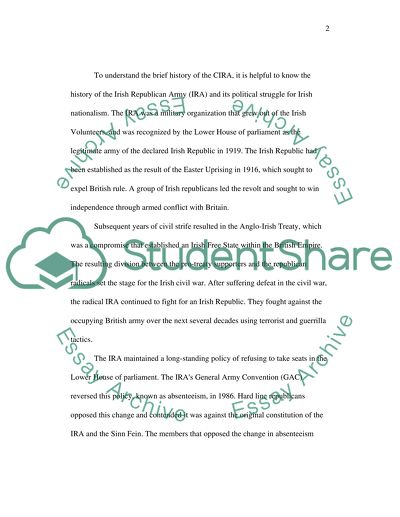Cite this document
(“Continuity Irish Republican Army (CIRA) Essay Example | Topics and Well Written Essays - 2750 words”, n.d.)
Retrieved de https://studentshare.org/miscellaneous/1501309-continuity-irish-republican-army-cira
Retrieved de https://studentshare.org/miscellaneous/1501309-continuity-irish-republican-army-cira
(Continuity Irish Republican Army (CIRA) Essay Example | Topics and Well Written Essays - 2750 Words)
https://studentshare.org/miscellaneous/1501309-continuity-irish-republican-army-cira.
https://studentshare.org/miscellaneous/1501309-continuity-irish-republican-army-cira.
“Continuity Irish Republican Army (CIRA) Essay Example | Topics and Well Written Essays - 2750 Words”, n.d. https://studentshare.org/miscellaneous/1501309-continuity-irish-republican-army-cira.


